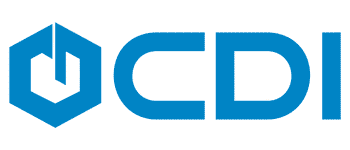7 Steps for Evaluating Business Process Automation with Laserfiche
- Jul 3, 2018
- 4 min read
Business process automation, in theory, has substantial technological benefits to organizations that implement automated processes. These implementations, however, may not always operate as efficiently as planned. This does not mean that organizations should not automate processes, but it does call out the need to carefully design which processes are selected for automation. Choosing the right processes increases the value and success of automation.
The key to successful automation with Laserfiche includes careful evaluation of the organization’s business processes. Did you know that streamlining business processes with automation can result in increased efficiency and cost-savings? It has been estimated that business process automation can save organizations between 40 and 60 percent in administrative/operational costs. The ability to cut the time it takes to perform routine processes can be reduced from days to minutes. The following can act as a guide to help determine processes that an organization may benefit from automating.
Evaluate the organizational business processes holistically by asking some important questions to determine what process to automate.
1. Can the process be repeated?
Determining the repeat-ability of a process is the first and often most crucial factor for automating a process. Processes that are standardized and repeated consistently are prime candidates for automation. A few examples of this kind of processes that would be good to automate include – weekly time-sheet tracking and submission process, invoices and purchase orders, or a new-hire on-boarding.
2. Would the automation decrease process duplication?
Are multiple departments or staff members within your organization inputting the same information into several different programs? If staff or customers are experiencing redundancy or duplicating efforts within a department or field, automation could be a time and cost-saving measure. Centralizing information can reduce costs, improve consistency, and create better accountability for everyone.
3. What impacts will process automation have on staff productivity?
Common elements of daily business processes that impact productivity include things like manual data entry, turn-around-time, and accuracy. If staff have a reduction in manual tasks, data can be collected and populated from other sources, documents can move around much quicker in a digital environment; allowing staff more time to take on other projects.
4. How is communication affected through automation within the organization?
Centralizing information through an automated process allows users consistency making it easier to share information with clients or colleagues anywhere. When information can be found in one system, instead of having to track information down from multiple locations or within several applications, communication is much more efficient. Laserfiche users that have implemented automated business processes find they can easily share information within the organization, with clients securely, and with staff on the go.
5. Can automating the process prevent knowledge drain?
Many organizations experience knowledge drain when individuals that have many responsibilities leave an organization. The staff that remains may not know all the details of the job that was performed by this person and therefore the knowledge that they have goes with them. This can be problematic when it comes to organizational processes, automation is an effective way to prevent knowledge drain because there are documented steps for successful implementations and processes are not being done by one individual.
6. Will Automation reduce or minimize costs?
There are several ways that the cost can be reduced using automation, this can easily be calculated to see how each process may benefit the organization through automation. The first step is to calculate the number of hours that are spent by individuals performing the process. It is also important to contemplate costs associated with the of the length of time it would take to implement the process, also considering any potential errors that could arise.
An example might be, a staff member spends an average of 20 hours a week working on new client on-boarding. They begin with manually entering data from the new client paperwork. Then they carry documents around the office for approvals and signatures or via mail waiting for responses. This would be a very cost-effective process to automate. This process automated might look like this, a new client fills out an electronic form online, the information from the form is then pulled from the form into a database and an account created in the CRM and file is created Laserfiche for all the documentation. The client and advisor could receive email notifications and requests for signatures where needed and the entire process taking only minutes instead of days or hours.
7. What are the pain points of the process?
Identify any current challenges that exist with the process. While these may be things that can be solved through automation it is important to evaluate the pain points thoroughly. Determining the cause of inefficiencies and working on process improvements before implementing.
Organizational Benefits
Here are some examples of how organizations are benefiting from automating processes and using Laserfiche.
Linn Benton Community College transformed their Transcript Evaluation Process process decreasing the process time from 6-8 weeks to just one. Read the full article here.
The City of Springfield Oregon centralized their journal entry processing and integrated with PeopleSoft making auditing quick and efficient. Read the full article here.
The Bryan Independent School District has taken their Employee On-boarding orientation process from 90 minutes to just seven and experience huge cost saving since implementing Laserfiche. Read the full article here.
Automating business processes is a popular trend and a growing requirement for a majority of industries. Deciding which processes to automate can be challenging and time-consuming, but with careful consideration can be very rewarding for organizations.
Hopefully, this post has added some thought-provoking ideas to processes that may be considered for automation. A few key takeaways to remember to ensure the process to be automated is standardized. If the process is constantly changing and those changes are manageable, allow for flexibility in the developed process. Consider the future, don’t automate a poor process. A well-constructed process will serve a much greater purpose than one that is just functioning.




Comments